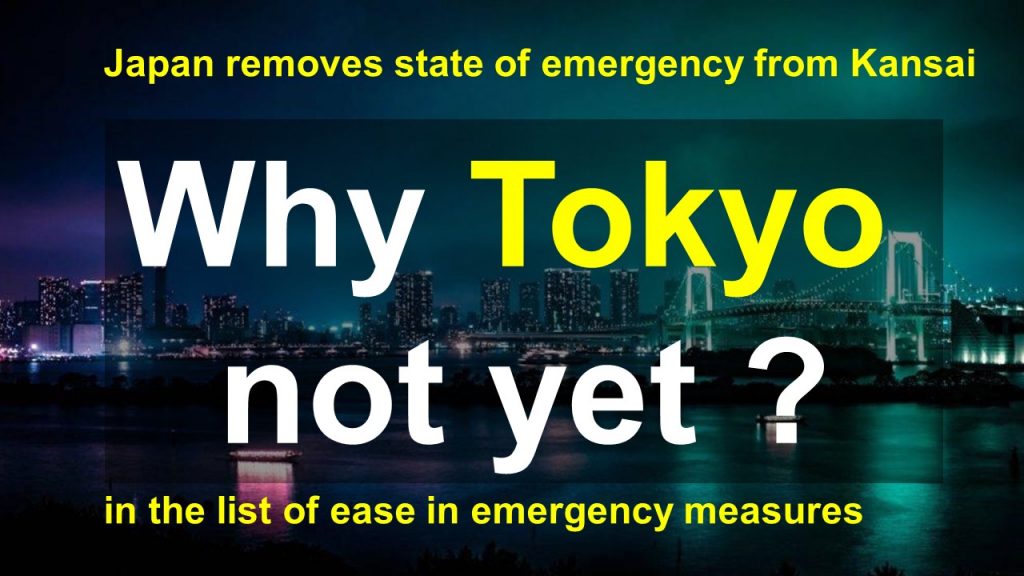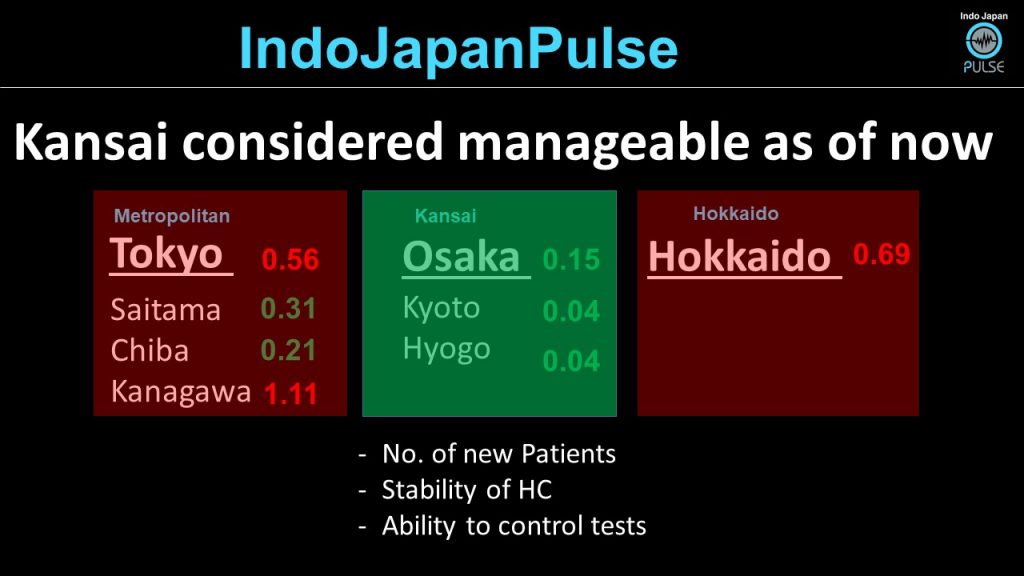Why not Tokyo yet ?

The prime minister lifted the state of emergency for 39 of the 47 prefectures last week and said it would be possible to do the same in the rest of the nation even before its planned expiry on May 31, provided certain criteria are met.
Video Post here:
The eight remaining prefectures include Tokyo, Osaka and five prefectures in their respective regions — as well as Hokkaido — covering nearly half of the country’s population.
They have been divided into three groups based on geography — the metropolitan area encompassing Tokyo, Saitama, Chiba and Kanagawa, the Kansai region of Osaka, Kyoto and Hyogo, and Hokkaido.
One of the numerical targets proposed by a government panel of experts for lifting the emergency in the remaining prefectures is whether infections have fallen below 0.5 new cases per 100,000 people over the previous week.
For Tokyo, with a population of roughly 14 million, that would mean that the number of people infected with the virus would have to be fewer than 70 in one week.
The three Kansai prefectures had all cleared the numerical target as of Monday, with a senior government official saying, “They will be fine (to lift the state of emergency) if things remain as they are.”
The three prefectures in the Kansai region reached that goal through Wednesday, according to data compiled by public broadcaster NHK, recording rates of 0.15 in Osaka, 0.04 in Hyogo and 0.04 in Kyoto.
Despite Chiba and Saitama having cleared the benchmark, with rates of 0.21 and 0.31 respectively, the figures remain above the threshold in Tokyo, where the rate is 0.56, and Kanagawa, where it is at 1.11. Considering the large movement of people within the metropolitan area on a daily basis, the panel decided that easing the restrictions should be done collectively across the region instead of for individual prefectures. The rate for Hokkaido was 0.69.
Yasutoshi Nishimura, who is spearheading the government’s virus response, said Thursday that the situation had improved in those three prefectures in the Kansai region based on an assessment of the number of new patients, the stability of the health care system and the ability to monitor and control infections, including through testing capability.

The experts said the rate of new infections was slowing down but cautioned that rolling back the extraordinary measures introduced by the emergency declaration does not mean the virus has disappeared, and that a second surge of infections may erupt before the wintertime
“Even if all prefectures lifted the state of emergency, or the number of new patients reported was zero for a short period of time, we should believe that the infections are continuing in an invisible way,” said Shigeru Omi, the government panel’s vice chair, at a Diet hearing Wednesday.
The 0.5 cases per 100,000 people criterion is significantly more stringent compared to some of the standards being used overseas. Germany has set that bar at 50, while New York is requiring an average of less than two over the three previous days.
End of post
—More on IndoJapanPulse Platform Ecosystem —
Explore about Japan and India on this premium curated info hub platform open for all
- Less Noise, more signal
- Community focused useful info on Life, Work, Business, Startup & beyond
- Community created posts encouraged
- No spams
Visit : http://indojapanpulse.com/
Subscribe to Youtube Page:
https://www.youtube.com/channel/UCwk4e_pL0o5eyUvkIC7cQZA/featured
Like Facebook Page:
https://www.facebook.com/IPJIndoJapanPulse/
Join Facebook Community:
https://www.facebook.com/groups/436167087220812/?ref=share
Leave a Reply to IndoJapanPulse
Please look at footer of website for Disclaimer and Privacy Policy.




